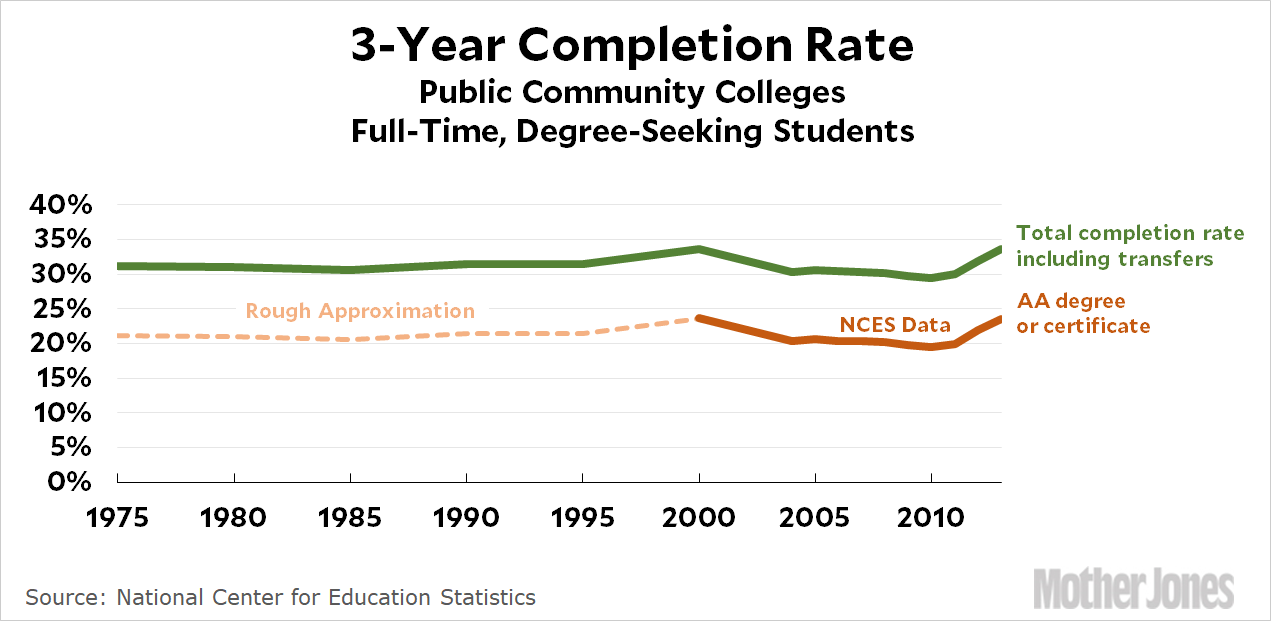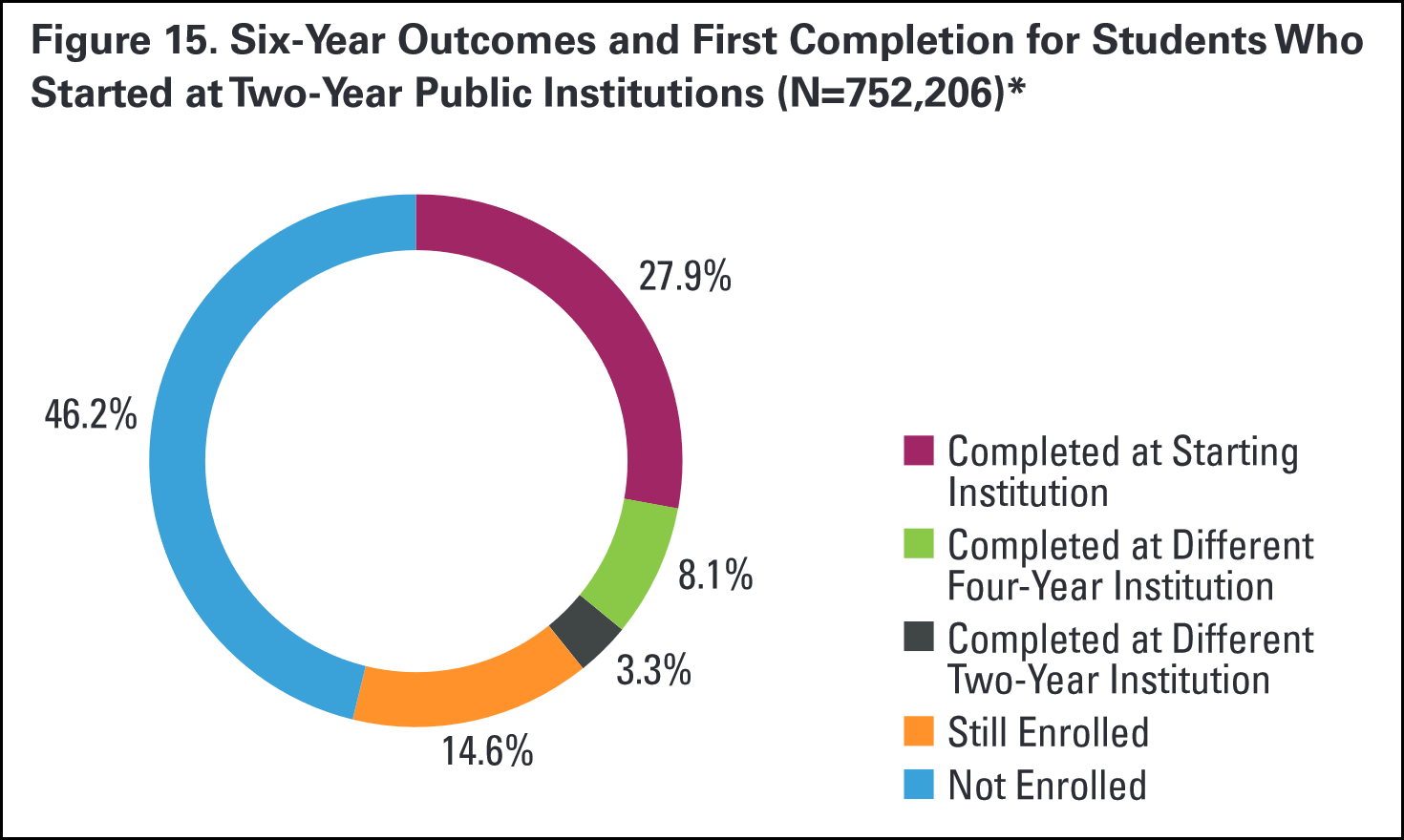After I wrote about my take on free college for all, I got an email from a policy expert who had a lot to say about our current educational system. This might turn into a post someday, but one thing he mentioned struck me as surprising:
I have talked with many community college presidents and provosts, and they will readily admit that most students at their college expect to get by by the skin of their teeth — and for good reason, since the 6-year graduation rate at community colleges is about 20% nationally. If you’re hoping to marginally succeed, that likely means that you think there’s a reasonable chance that you’ll fail out, increasing the risk of going to college.
I don’t know about the 6-year completion rate, but the feds have data on completion “within 150 percent of normal time,” which I assume would be three years for a 2-year community college. Here’s the completion rate since 2000, along with a very rough approximation for the decades before that. Note that this is for full-time, degree-seeking students, so it doesn’t include adult education or folks who are just taking a class or two for personal fulfillment:

UPDATE: The original version of this chart didn’t include students who skip their AA but transfer to a 4-year university. This adds about 10 percentage points to the total. I’ve corrected the chart and the text. Thanks to the Twitter followers who pointed this out and made me do a little more digging.
Sure enough, only about 20 percent of degree-seeking students get their AA, though the completion rate is more like a third when you count transfers to 4-year universities. It might be a little higher if you look at 4-year completion rates, but I doubt it goes up much after that. You could probably say, very roughly, that only one-third of students who start at community colleges with the aim of getting a degree ever finish.
I don’t have anything special to say about this. It just seemed like a surprising statistic that I thought might be of interest. My emailer’s general point was that money wasn’t at the root of this dismal completion rate, so making community colleges free wouldn’t fix it. Maybe so. Maybe we have other, bigger problems at this level.
UPDATE 2: My Twitter followers also questioned whether money was really so inconsequential as all that. I can’t say for sure, but the completion rate is almost identical for the top three income quartiles, which suggests money is not the gating item. The completion rate is lower for the poorest income quartile, but even there the difference isn’t huge (roughly 30 percent vs. 37 percent).
YET ANOTHER UPDATE: For what it’s worth, the National Student Clearinghouse Reseach Center estimates that the total 6-year completion rate for community college students is 39.2 percent:














